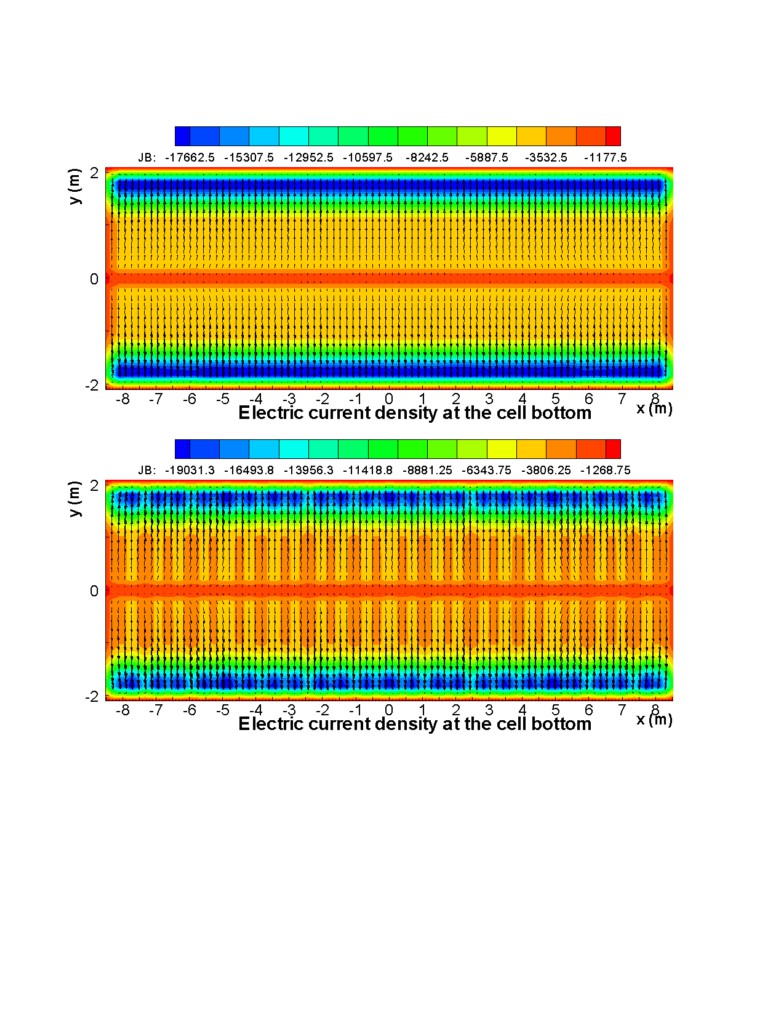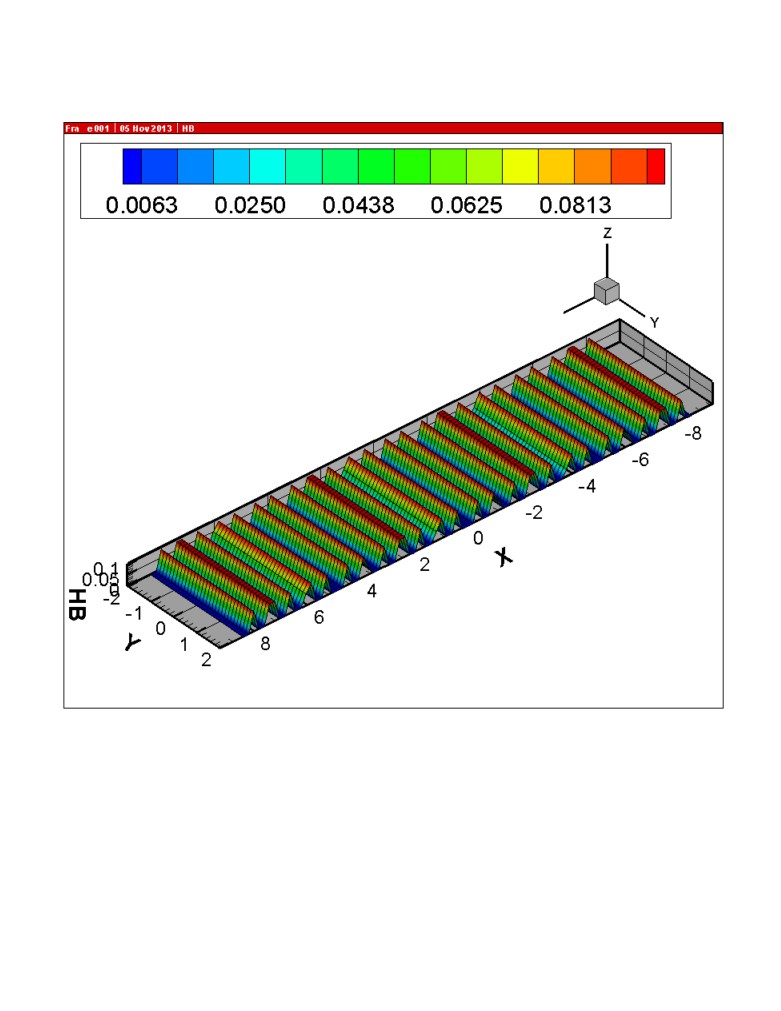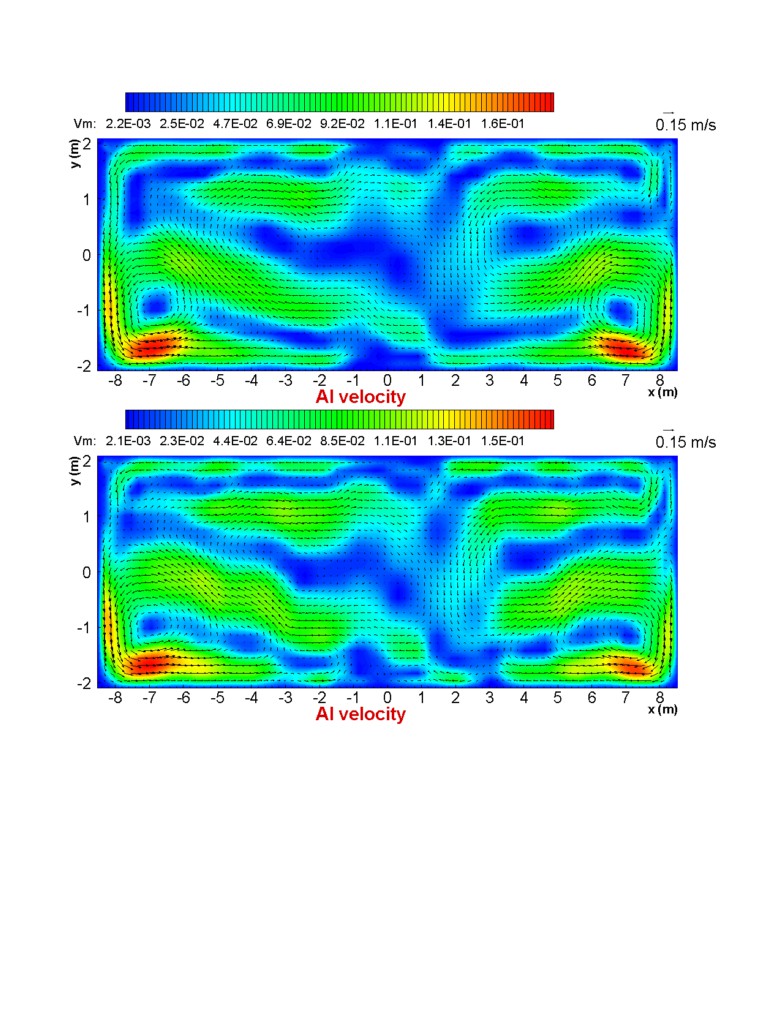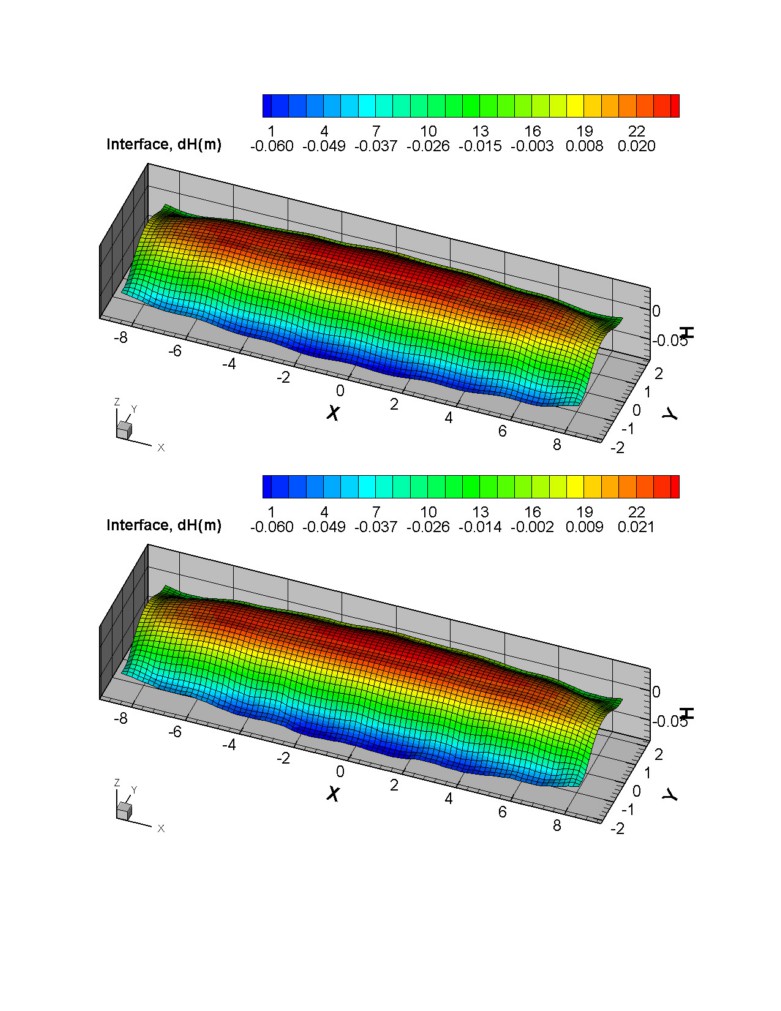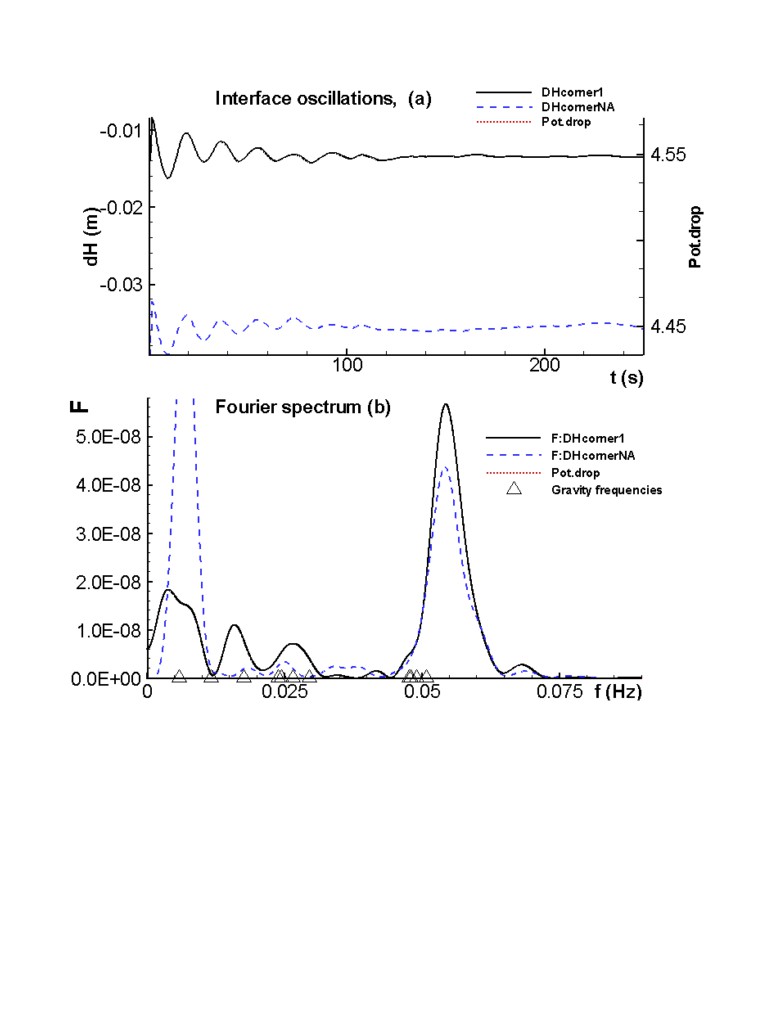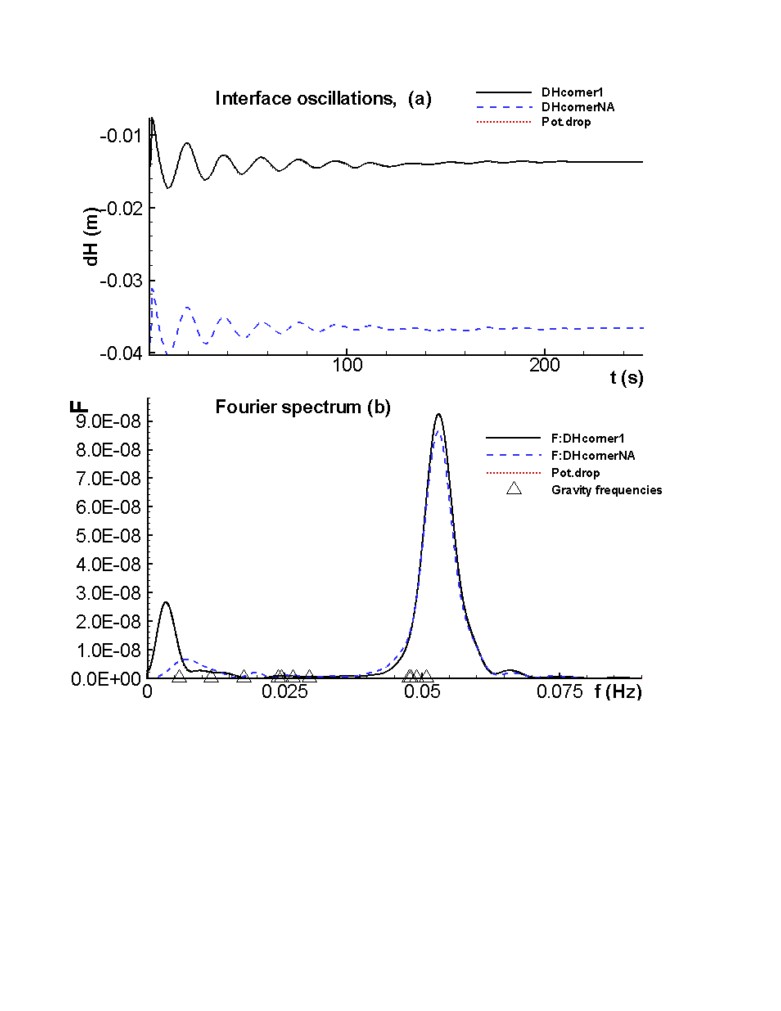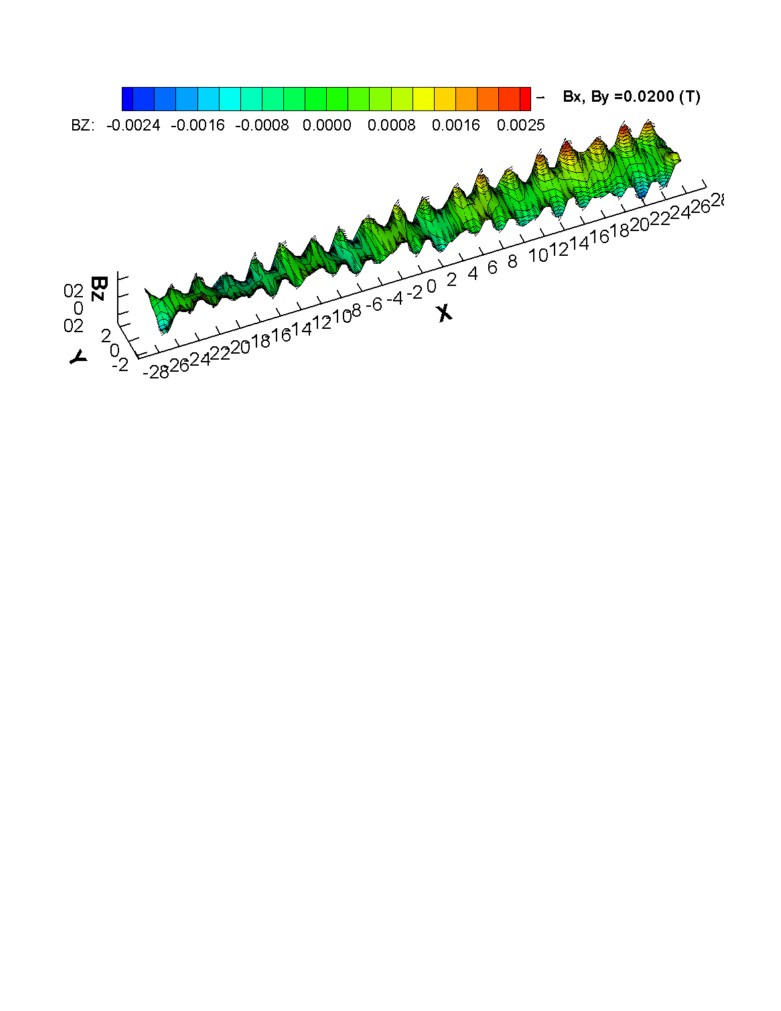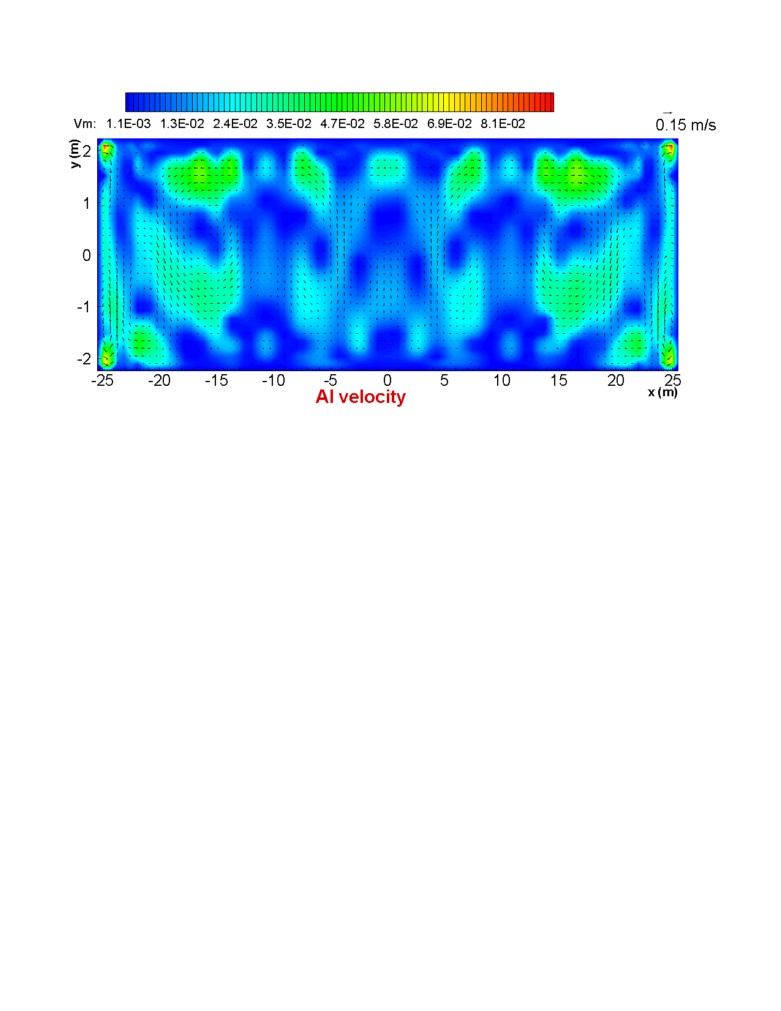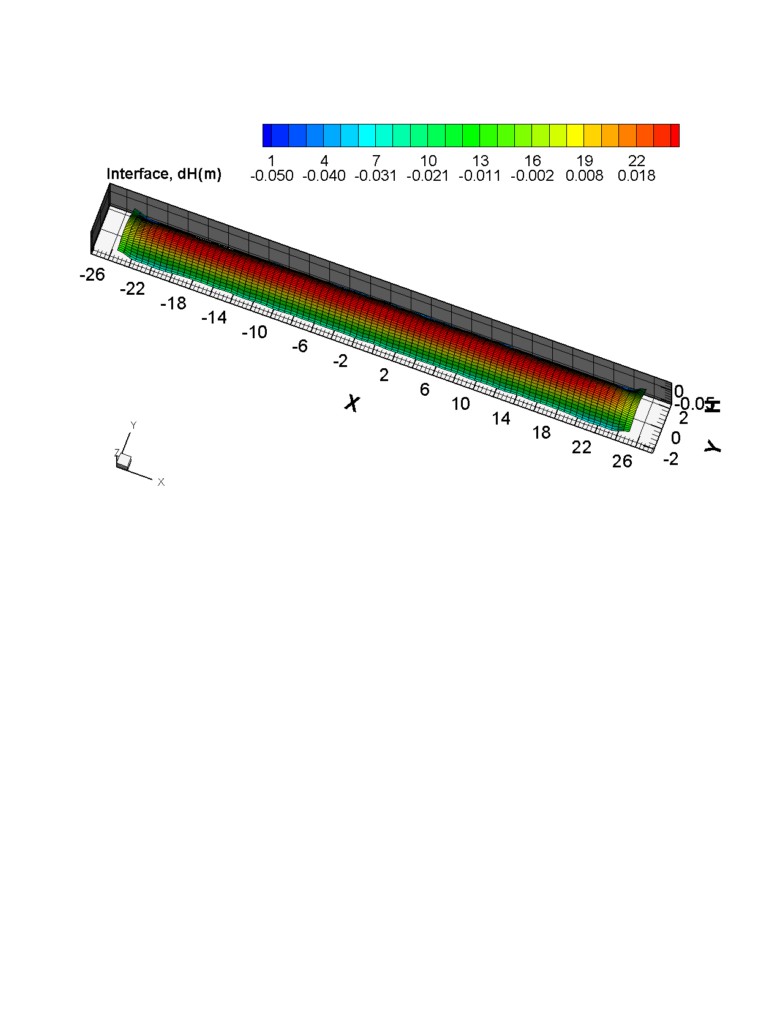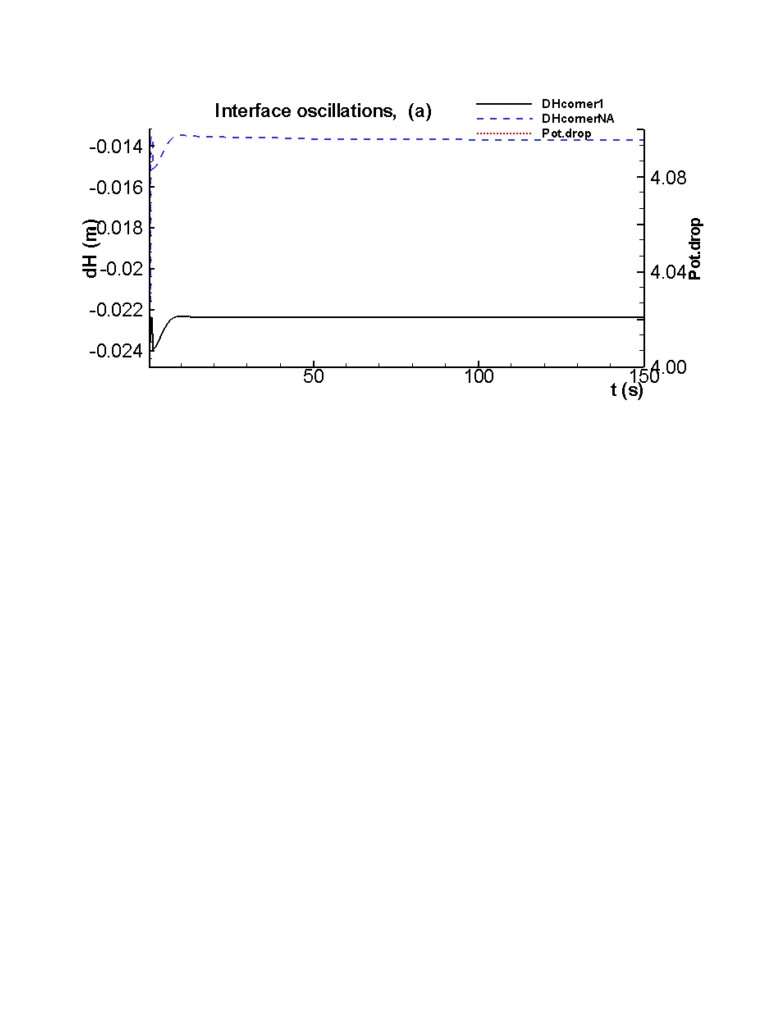CELL STABILITY STUDIES USING THE MOST RECENT
MHD-VALDIS CODE VERSION
Marc Dupuis, Jonquière
Valdis Bojarevics, Greenwich
This year at the TMS, the authors will present a study on the influence of the cathode surface geometry on
the metal pad current density and on the cell stability [1]. That cell stability analysis was carried out using
a MHD-Valdis code version that was not accounting of the impact of the cathode surface geometry on the
cathode surface current density.
Also this year at the TMS, the second author will present a new version of the MHD-Valdis code that takes
that effect into account [2]. The first cell stability study presented here is a repetition of the study
presented in [1] on the impact of transversal ridges on the cell stability using that new code version.
In 2005, the first author presented the cell heat balance study of a 740 kA cell [3]. One year later, the
authors presented the cell stability study of that same 740 kA cell [4]. That cell used an innovative
magnetic compensation scheme that ensured its MHD stability.
The authors claimed at the time that they cannot foresee any thermo-electric, thermo-mechanic or MHD
related issue that would limit the size of a cell. Since that time, many 400+ kA full size smelters have been
built in China, Russia and UAE and the AP60 demonstration smelter started its operation in Canada.
Since a 740 kA cell no longer seems far fetched, the second cell stability study presented here is the one of
a 1500 kA cell in order to reiterate the point that as far as MHD cell stability is concerned, there is no
foreseeable limit to the size on an aluminium electrolysis cell.
Study of the Impact of Transversal Ridges on Cell Stability
Cathode surface with transversal ridges is one design now very popular in China [5]. It has been observed
to be very beneficial to reduce specific energy consumption as presented in [6]. This has been achieved by
greatly reducing the ACD which seems to imply that cells with transversal ridges are more stable than cells
with flat cathode surface. Yet, the cell analysis studies presented in [7] and [1] are not confirming that
interpretation of the observed facts.
The study presented in [7] neglected the impact of the cathode surface geometry on the cathode surface
current density. The study presented in [1] did account for that effect but not very accurately as the effect of
the cathode surface geometry on the cathode surface current density had to be imposed. The new cell
stability study presented here was done on the most recent version of the MHD-Valdis code that takes fully
into account all the impact of the transversal ridges on the MHD behavior of the cell [2].
Figure 1 presents the metal pad current density solution comparison between the flat cathode surface case
(top) and the cathode surface with transversal ridges case (bottom). The geometry of the cathode surface
ridges is presented in Figure 2. It can be noticed that the mesh is not quite fine enough to perfectly capture
the ridges geometry or the extra longitudinal currents (JX) generated by the ridges presence (see [1] for
more details).
Figure 3 presents the steady-state metal pad flow field solution comparison. The presence of the ridges
slows down the flow but not significantly. Figure
4 presents the steady-state bath-metal interface
deformation solution comparison. Again, the presence of the ridges is only barely affecting the shape of the
interface deformation.
The previously presented results demonstrated that the presence of the transversal ridges only marginally
affects the steady state solution, adding some flow resistance to the cathode surface. This in turn slows
down the metal recirculation flow which is good for cell stability but also introduces some longitudinal
horizontal current which is bad for cell stability.
Only the full non-linear transient cell stability analysis can tell us what is the impact of those transversal
ridges on the cell stability and the only practical tool to carry-up such a non-linear transent cell stability
analysis is MHD-Valdis. Figure 5 presents the comparison of the transient cell stability analysis results.
The results indicate that the addition of transversal ridges, while keeping the same metal pad height hence
reducing the mass of metal, slightly decreases the cell stability. So this new cell stability study confirms the
results of the previous ones, adding transversal ridges has only a marginal effect of the cell stability and
that marginal effect can be detrimental if the mass of metal is not kept the same. See [1] for an alternative
explanation as for where the observed gain of cell stability is coming from.
Study of the Cell Stability of a 1500 kA Aluminium Electrolysis Cell
The 1500 kA cell that will be the subject of this study is twice the size of the 740 kA that was studied in [3]
and [4] which itself was 50% bigger than the 500 kA cell retrofitted into a 600 kA cell in [8]. That 50
meters long cell has 72 cathodes blocks, 144 anodes and 18 risers. Each riser feeds the current coming from
4 cathodes blocks to 8 anodes.
In principle, the 740 kA cell could be retrofitted into a 890 kA cell; so 1500 kA is well within reach of a
cell having twice that size. Figure 6 presents the BZ component of the magnetic field obtained by passing
1500 kA into a 50 meters long cell fed through 18 risers using a very efficient magnetic compensation
scheme. Since the magnetic compensation scheme is 100% scalable, it works equally well on any cell size
as this 1500 kA cell example demonstrates.
Figure 7 presents the resulting metal pad flow field solution while Figure 8 presents the steady-state bath-
metal interface deformation. Notice the upstream downstream symmetry of the bath-metal interface
deformation which is also the result of the magnetic compensation scheme used.
The transent cell stability analysis predicts that this 1500 kA cell with essentially no existing BZ gradient in
the long (X) direction of the cell will be extremely stable as it can be seen in Figure 8. Any organization
interested to patent the busbar compensation scheme used in that study in partnership with GeniSim Inc.
can contact the first author.
Conclusions
The authors hope that these demonstration studies highlight the value of using mature state of the art
mathematical models like MHD-Valdis to carry-up such MHD cell stability studies. MHD-Valdis, used by
the majority of the groups actively developing high amperage cell technology today, is available to the
whole aluminium industry through GeniSim Inc.
References
[1] M. Dupuis and V. Bojarevics, “Influence of the Cathode Surface Geometry on the Metal Pad Current
Density”, Light Metals, TMS, (2014), to be published.
[2] V. Bojarevics and S. Sira, “MHD Stability for Irregular and Disturbed Aluminium Reduction Cells”,
Light Metals, TMS, (2014), to be published.
[3] M. Dupuis, “Thermo-Electric Design of a 740 kA Cell, Is There a Size Limit”, ALUMINIUM 81(4)
(2005), 324-327.
[4] M. Dupuis, V. Bojarevics and D. Richard, “MHD and Pot Mechanical Design of a 740 kA Cell”
ALUMINIUM 82, (2006) 5, 442-446.
[5] N. Feng et al., “Research and Application of Energy Saving Technology for Aluminum Reduction in
China”, Light Metals, TMS, (2012), 563-568.
[6] J. Zhou et al.,
“Depth Analysis and Potential Exploitation of Energy-Saving and Consumption-
Reduction of Aluminum Reduction Pot”, Light Metals, TMS, (2012), 601-606.
[7] V. Bojarevics, “MHD of Aluminium Cells with the Effect of Channels and Cathode Perturbation
Elements”, Light Metals, TMS, (2013), 609-614.
[8] M. Dupuis and V. Bojarevis, “Retrofit of a 500 kA Cell Design Into a 600 kA Cell Design,”
ALUMINIUM, 87 (1/2), 2011, 52-55.
Authors
Dr. Marc Dupuis is a consultant specialized in the applications of mathematical modeling for the
aluminium industry since 1994, the year when he founded his own consulting company GeniSim Inc
(www.genisim.com). Before that, he graduated with a Ph.D. in chemical engineering from Laval University
in Quebec City in 1984, and then worked 10 years as a research engineer for Alcan International. His main
research interests are the development of mathematical models of the Hall-Héroult cell dealing with the
thermo-electric, thermo-mechanic, electro-magnetic and hydrodynamic aspects of the problem. He was also
involved in the design of experimental high amperage cells and the retrofit of many existing cell
technologies.
Dr. Valdis Bojarevics is Reader in magnetohydrodynamics at the University of Greenwich (UK). He is
specialising in the numerical modelling of various electrometallurgical applications involving complex
interactions of the fluid flow, thermal and electrical fields, melting front and free surface dynamics; has
been involved in numerous industrial consulting projects.
Figure 1: Metal pad current density solution for the flat cathode surface case (top) and cathode surface with
transversal ridges case (bottom)
Figure 2: Cathode surface geometry with the transversal ridges
Figure 3: Metal pad flow field solution for the flat cathode surface case (top) and cathode surface with
transversal ridges case (bottom)
Figure 4: Bath-metal interface deformation solution for the flat cathode surface case (top) and cathode
surface with transversal ridges case (bottom)
Figure 5: Transient cell stability analysis results for the flat cathode surface case (top) and cathode surface
with transversal ridges case (bottom)
Figure 6: Bx componant of the magnetic field of the 50 meters long 1500 kA cell
Figure 7: Metal pad steady-state flow field for the 1500 kA cell
Figure 8: Steady-state bath metal interface deformation for the 1500 kA cell
Figure 9: Transient cell stability analysis results for the 1500 kA cell



